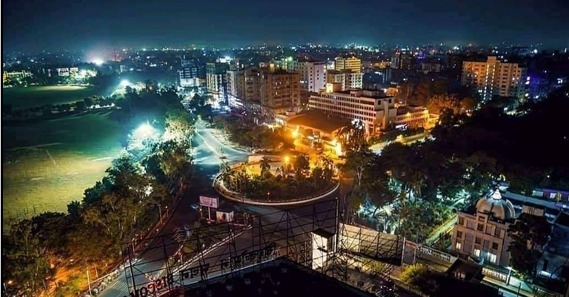
In recent years, India's tier-2 cities have emerged as the new hotspots for live concerts, music festivals, and youth-driven cultural events. From Patna to Indore, Ranchi to Guwahati — these cities are buzzing with audiences hungry for large-scale entertainment.
But executing a concert in a tier-2 city is very different from doing it in Delhi or Mumbai.
I'm Mrinal Kishor, and I've been a part of India's evolving event landscape for over a decade. From political rallies and public health campaigns to cultural mega shows, I've worked with teams across regions — especially in tier-2 and tier-3 cities.
Here's a behind-the-scenes look at what it really takes to run a successful concert in these cities, where opportunities are big, but so are the challenges.
1. Understand the Pulse of the City
Each tier-2 city in India has its own culture, rhythm, and expectations. What works in Jaipur may flop in Jamshedpur. First-time organizers often assume that a big artist alone can pull the crowd — but regional emotion matters.
✅ Mrinal Kishor's Tip:
- Do pre-event surveys or audience polls
- Collaborate with local influencers, creators, and youth clubs
- Integrate local music or folk elements into your opening acts
Success depends on how well your concert connects with the local audience, not just the headliner.
2. Venue Planning is Everything
In metro cities, infrastructure is sorted. But in tier-2 cities, the right venue with capacity, safety, and logistics can make or break your concert. Many cities don't have plug-and-play arenas, so you'll often need to build a stage from scratch.
✅ Mrinal Kishor's Tip:
- Do a full site recce before locking the venue
- Assess power backup, water, sanitation, barricading, and green rooms
- Always account for last-mile connectivity and parking
Choose venues not just by size, but by accessibility and adaptability.
3. Permissions & Local Authorities Matter More Here
In tier-2 cities, local administration has a tighter grip on crowd control and public events. One overlooked NOC can stop your show hours before the gate opens.
✅ Mrinal Kishor's Tip:
- Begin the permissions process 3–4 weeks in advance
- Include: police NOC, sound permission, PPL, fire safety clearance, traffic plan
- Assign a dedicated liaison person to coordinate with municipal officials
A well-managed compliance plan builds trust with authorities — and saves you from panic on concert day.
4. Choose a Skilled Local Ground Team
Even if your planning team is from Delhi or Bangalore, your on-ground crew must include locals. They know the city, the language, and the landscape.
✅ Mrinal Kishor's Tip:
- Hire local logistics managers and volunteers
- Train them 2–3 days before the event with roles and responsibilities
- Reward reliability — these are the people who'll save you when issues pop up last-minute
Your local crew is the heartbeat of your event.
5. Hyperlocal Promotion Works Best
Billboards and radio still work in tier-2 markets. But more importantly, word-of-mouth and community outreach drive footfall.
✅ Mrinal Kishor's Tip:
- Do campus activations and street team promotions
- Partner with city-based social media pages
- Leverage WhatsApp groups of colleges, clubs, gyms, and coaching centers
The audience here doesn't just scroll — they attend what they hear from friends and trusted voices.
6. Prepare for On-Ground Contingencies
From sudden power cuts to last-minute venue changes — tier-2 concerts need strong contingency planning.
✅ Mrinal Kishor's Tip:
- Keep backup generators, extra fencing, standby medics, and security reinforcements
- Brief your security team and volunteers for crowd control and artist protection
- Coordinate real-time with local police and fire department
A concert is not just about energy — it's about efficiency during chaos.
7. Artist Hospitality Can Define Experience
Tier-2 cities often lack premium hotel chains or rider-compliant backstage setups, so you'll have to go the extra mile to make artists feel comfortable.
✅ Mrinal Kishor's Tip:
- Assign a dedicated hospitality manager
- Arrange airport pickups, dietary preferences, green room demands well in advance
- Make sure tech checks (sound/light/stage) happen as per artist comfort
An artist who feels cared for will give their best on stage — and is more likely to return.
Final Words from Mrinal Kishor
Running a successful concert in a tier-2 city is not just an event — it's a statement. It shows the city what's possible. It gives youth a platform. It creates economy for vendors, artists, and professionals. And it builds a new energy in regions often overlooked.
But it's only possible when backed by experience, planning, and local connection. As someone who has been at the heart of state-level concerts, public campaigns, and massive youth events in smaller cities, I can confidently say:
👉 Tier-2 is the future of India's event scene — but only for those ready to do the ground work.
